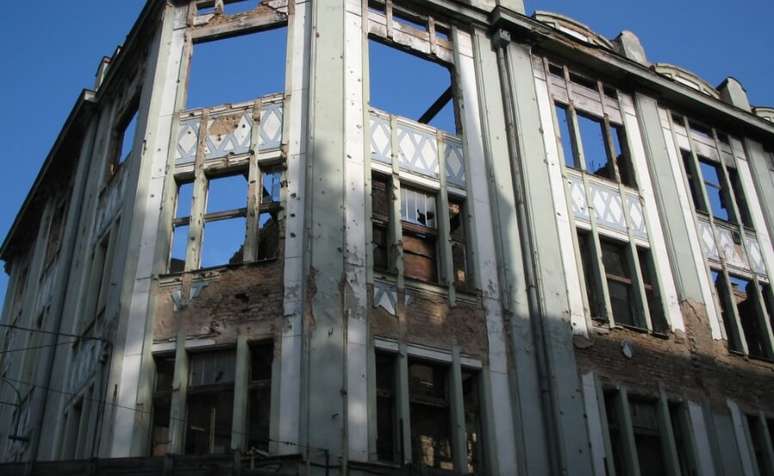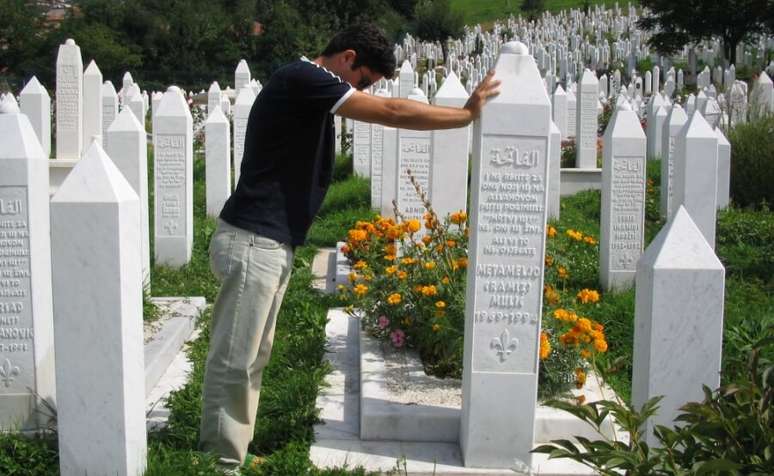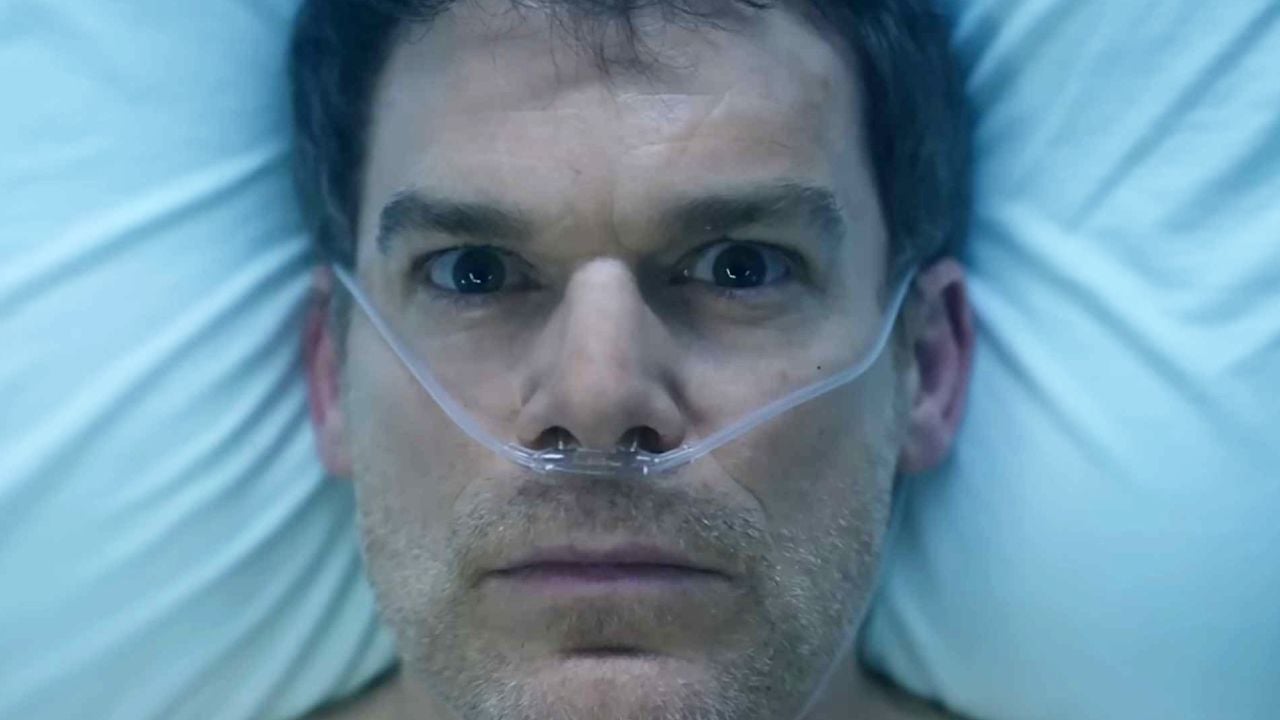The Balkans have always been a hotbed of confusion
HI!!! Save yourself if you can.
In September 2005 I was in Sarajevo with a couple of friends. It was a long holiday in Vienna from where we left by bus for a long 15 hour journey to the capital of Bosnia and Herzegovina.
Happy and friendly people, a city with good food and beer, lots of history, culture, wars and religion in the so-called corner of the world.
The soundtrack will not feature Pavarotti and Bono Vox singing Miss Sarajevo. I will spare your ears from this noise. I created the playlist Balkan Express especially for this article. The artists are Revolt and Helem Nejse (Bosnia), nipples (Croatia), Zeta Reticle, Magnificent, Laibach and Valentino Kanzyani (Slovenia) as well as the magnificent Romanian-born Béla Bartók.
Enjoy the ride!
Sarajevo, where all religions converge
Separated by just 200 meters on one of the main streets of the city we see a Catholic church, another Orthodox church, a synagogue and at the end of the street, in the small square, obviously a Muslim mosque.
This explains why Sarajevo is called the corner of the world. A unique city where different religious beliefs seem to have always coexisted in peace and harmony. Where the West meets the East, on a border that for hundreds of years has demarcated two great empires, the Austro-Hungarian and the Ottoman. Christian and Islamic worlds together.
In 2005, the city was still recovering from the recent war that ended in 1995. Many buildings with bullet holes and rubble shared our eyes with people’s daily lives.
Open-air markets, small cafes and knick-knack shops, a few tourists, children going to school, adults working with everything they can do and a certain peace and tranquility rare in recent times.
By the way, we had lunch in a beer house and the local piva was very good. In the evening, after dinner, we entered the Bosnian nightlife, complete with a disco, in a respectful group full of very excited young people.
The number of cemeteries on the hills of the cities is impressive. Sarajevo is located in a valley cut by the beautiful Miljacka River and is surrounded by hills. We went to one of them to take a look. The dates on the headstones indicate that the vast majority of deaths occurred between 1992 and 1995, almost all men between 18 and 50 years old. The massacre of a generation.
WWI
It was on a bridge over the Miljacka River that the attempted attack on the Austrian Archduke Franz Ferdinand, son of Kaiser Franz Joseph, known as Franz Joseph, and his wife took place. A young Serbian partisan terrorist and his crew placed bombs on the bridge which would be detonated during the passage of the imperial convoy. A miscalculation caused everything to explode after the cars passed. Some clumsy terrorists jumped from the bridge. The archduke and his band fled in fear, but instead of leaving the city as quickly as possible, they decided to stop at the town hall to calm down and let the dust settle.

Tensions between Serbia, Russia, Germany and the Habsburgs of Austria were high at the time. From the beginning this journey was considered foolhardy. The visit would be an attempt by the Austro-Hungarian Empire to demonstrate strength and cohesion in the Bosnian capital.
After the frustrated attack, Gavrilo Princip, one of the 19-year-old terrorists, was calm and serene in a cafe enjoying a Bosnian coffee, similar to the Turkish one, eating a burek and complaining about the frustrated attack when he saw the Archduke’s car enter a dead-end street. . When I put the car in reverse and tried to go back, the car remained there, in front of the bar and the terrorist, who this time didn’t hesitate. He dropped the half-eaten cup and snack and fired two accurate shots, one at Franz Ferdinand and the other at his wife, Sofia Chotek, killing them both.
After the double murder, the Habsburgs declared war on Serbia, dragging the European countries into the conflict one after the other. The First World War began and lasted four years, between 1914 and 1918.
Going back to 2005 and the 1992-95 war, during its struggle for independence Bosnia did not suffer the same peaceful fate as Slovenia, as reported in my latest article which you can read here.
Serbia, with the support and connivance of Croatia, was interested in dividing the country and promoting ethnic cleansing. Bosnia had just declared independence from Yugoslavia and did not yet have an army. The city was defended by civilians, most of them without weapons. The Muslims were the ones who suffered the most, they were hunted down and massacred.
The siege of Sarajevo is one of the longest in modern history, starting on 5 April 1992 until 29 February 1996. It lasted three times longer than the siege of Stalingrad and a year longer than that of Leningrad, now San Petersburg. There were 1,425 days of agony and despair.

The most famous and cruel massacre occurred in Srebrenica, considered a safe place by the UN at the time. In early July 1995, more than 8,000 Muslim men and boys were taken prisoner and brutally murdered by Bosnian Serb soldiers commanded by General Ratko Mladic.
Mass rapes were committed and the survivors were expelled. It was the largest war crime committed in Europe since the end of World War II.
Serbs today still deny the genocide and try to rewrite history by glorifying war criminals. Bosnians want recognition of the massacre.
And to think that in Brazil more than 50 thousand people are killed every year. More than six times the deaths in Srebrenica. Every year!
But everything seems to be normal, under control.
Worth seeing and reading
FILM: Underground (1995) – Emir Kusturica. Collective madness and black humor during the war in Bosnia.
“Underground” can be summed up as the history of the former Yugoslavia in the 20th century transformed into a dark comedy. The film gave Bosnian director Emir Kusturica, born in Sarajevo, his second Palme d’Or at Cannes. The first came in 1985 with “When Dad Left on a Business Trip.”
The first scenes reveal the director’s wild style: in Belgrade, at dawn on a Sunday in 1941, two noisy bohemians, Crni (Lazar Ristovski) and Marko (Miki Manojlovic), return from the gandaia shooting in the air, followed by a noisy band . .
The collective madness of “Underground” increases when a Nazi bombing hits the city zoo. Some animals die, others escape and take to the streets. In his films the director always highlights the counterpoint between men and beasts, highlighting what is animal in human behavior and conduct.
Any kind of morals or good manners are wasted. Sex, drunkenness, bar fights, revenge and betrayal, everything is possible for this mad crowd who lives as if there was no war and their days were numbered. As if they were gypsies who lived without knowing what they would do the next day, without worrying about it.
The almost three-hour film shows that, during the Nazi occupation of the country, Marko and Crni, communist profiteers, with several companions create a hideout in the city’s slums where they store and manufacture weapons.
From that moment on, Marko climbs the ranks of the Communist Party, becoming an advisor to the feared Marshal Tito. The war ends with Tito’s seizure of power. Marko decides to keep his friends underground, in ignorance and unaware of the events, as if the conflict continues.
The film is based on a play by Dusan Kovacevic. Kusturica wants to show that, under pressure, human beings show their worst side, regardless of their ethnic or geographical origin.
I need to revisit this gem. Read this long and interesting one interview with the director.
To the question “Why did you dedicate yourself to cinema?” he answers:
“Not to be a criminal. I would have done everything not to fall into the criminal environment around me. All the people I grew up with in Sarajevo became criminals. Sometimes I even lived outside the law, but I knew that when I had to stop . I knew the limit of that line and that if I crossed it, everything would go up in flames.”
BOOK: Maybe Airlines – Fernando Costa Netto (Dandao)
Maybe you can fly, this is what the book by journalist Fernando Costa Netto tells us with photos and stories taken from his on-site reporting on the siege of Sarajevo during the war in Bosnia. Dandão, as he is known, is one of the founders of Trip magazine and former editor-in-chief of Notícias Populares.
The title of the book, something like “Maybe Airlines”, shows how precarious the situation was in Sarajevo. As he himself reports: “To get there, you had to hitchhike on a UN plane, which left from Split in Croatia or Ancona in Italy. In addition to the institute’s employees, there was humanitarian aid. Boarding for journalists and photographers was not guaranteed.”
Publisher’s synopsis:
In the summer of 1993, photojournalist Fernando Costa Netto arrived in Sarajevo with $400 in his pocket and without any kind of support. I walked and spent the nights on the couch in a group home. But it was this direct contact with the population that gave him a unique perspective: that of the city outside the press bubble, punished by the Chetnik bombs.
Twenty-five years after the end of the siege of Sarajevo, the images remain of great impact – and motivated the publication of this book, which contains, in addition to photographs and reports by Costa Netto, an afterword signed by Leão Serva, which highlights warns of the fragility of institutions in the Balkans and shows how Sarajevo may be close to once again facing the death machine that has never stopped persecuting it.
WEBSITE: Sniper Alley Project, sad testimonies of a war.
The target of this project is to find, identify and archive photos taken in Sarajevo during the 1425-day siege, the longest in modern history.
During this time, the citizens of Sarajevo lived in “survival mode”. Getting water, food and any other basic necessities was a dangerous task, as soon as you left your shelter you became the target of snipers and grenades.
Sniper Alley or “Sniper Alley” was the informal name of the streets Zmaja od Bosne and Meša Selimović Boulevard, Sarajevo’s main avenue which during the Bosnian War was lined with sniper positions and became famous as a dangerous place for civilians to cross.
The avenue connects the industrial part of the city and its residential areas to the historical and cultural sites of the Old City. The avenue has many tall buildings that give snipers wide fields of vision and fire.
The photos are heartbreaking. They are inside Instagram Also.
.
Source: Terra
Rose James is a Gossipify movie and series reviewer known for her in-depth analysis and unique perspective on the latest releases. With a background in film studies, she provides engaging and informative reviews, and keeps readers up to date with industry trends and emerging talents.







